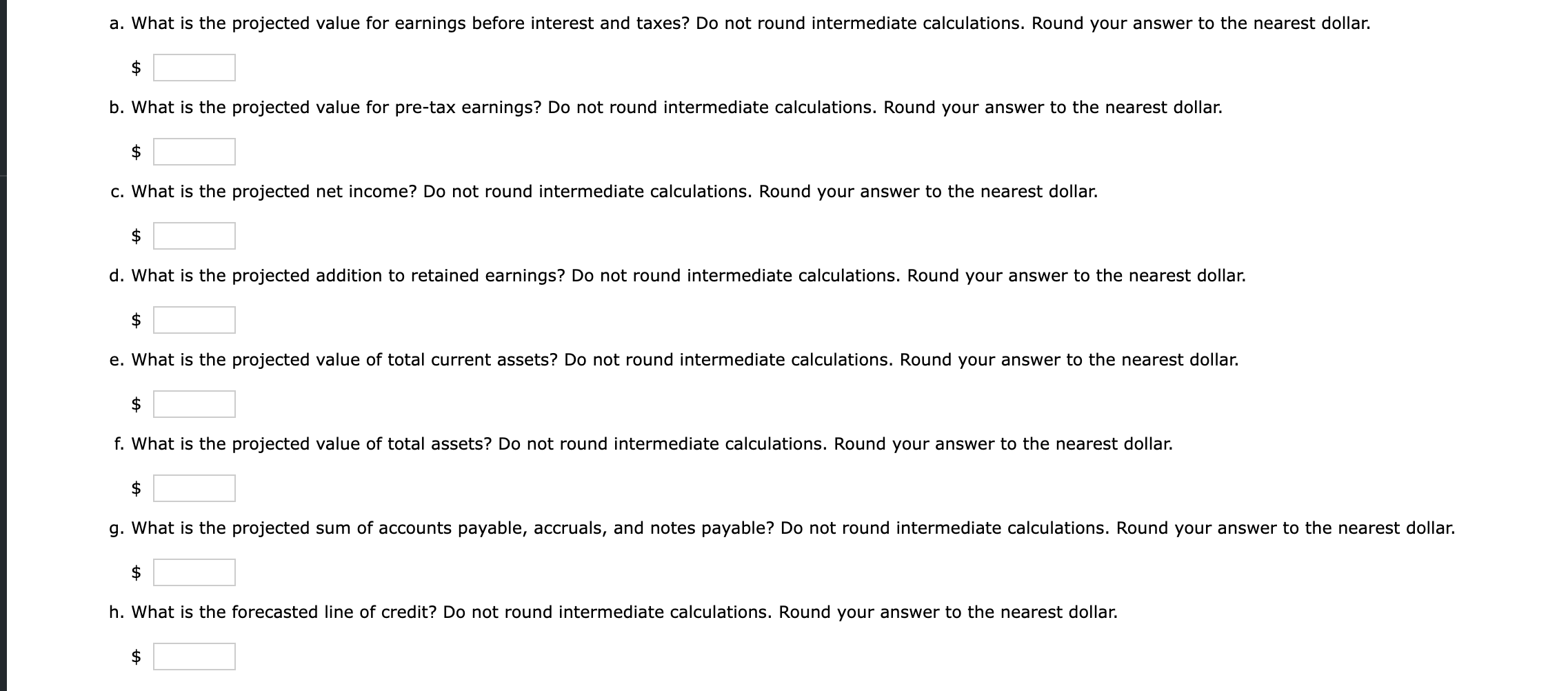

eBook Financing Deficit Stevens Textile Corporation's 2021 financial statements are shown below: Balance Sheet as of December 31, 2021 (Thousands of Dollars) Cash $ 1,080 Accounts payable Receivables 6,480 Accruals Inventories 9,000 Line of credit Total current assets $16,560 Notes payable Net fixed assets 12,600 Total current liabilities Mortgage bonds Common stock Retained earnings Total assets $29,160 Total liabilities and equity Income Statement for December 31, 2021 (Thousands of Dollars) $ 4,320 2,880 0 2,100 $ 9,300 3,500 3,500 12,860 $29,160 460 Sales $36,000 Operating costs 34,000 Earnings before interest and taxes $ 2,000 Interest 160 Pre-tax earnings $ 1,840 Taxes (25%) Net income $ 1,380 Dividends 552 Addition to retained earnings $ 828 Stevens grew rapidly in 2021 and financed the growth with notes payable and long-term bonds. Stevens expects sales to grow by 25% in the next year but will finance the growth with a line of credit, not notes payable or long-term bonds. Use the forecasted financial statement method to forecast a balance sheet and income statement for December 31, 2022. The interest rate on all debt is 10%, and cash earns no interest income. The line of credit is added at the end of the year, which means that you should base the forecasted interest expense on the balance of debt at the beginning of the year. Use the forecasted income statement to determine the addition to retained earnings. Assume that the company was operating at full capacity in 2021, that it cannot sell off any of its fixed assets, and that assets, spontaneous liabilities, and operating costs are expected to increase by the same percentage as sales. a. What is the projected value for earnings before interest and taxes? Do not round intermediate calculations. Round your answer to the nearest dollar. $ b. What is the projected value for pre-tax earnings? Do not round intermediate calculations. Round your answer to the nearest dollar. $ c. What is the projected net income? Do not round intermediate calculations. Round your answer to the nearest dollar. d. What is the projected addition to retained earnings? Do not round intermediate calculations. Round your answer to the nearest dollar. $ e. What is the projected value of total current assets? Do not round intermediate calculations. Round your answer to the nearest dollar. $ f. What is the projected value of total assets? Do not round intermediate calculations. Round your answer to the nearest dollar. g. What is the projected sum of accounts payable, accruals, and notes payable? Do not round intermediate calculations. Round your answer to the nearest dollar. $ h. What is the forecasted line of credit? Do not round intermediate calculations. Round your answer to the nearest dollar. $








